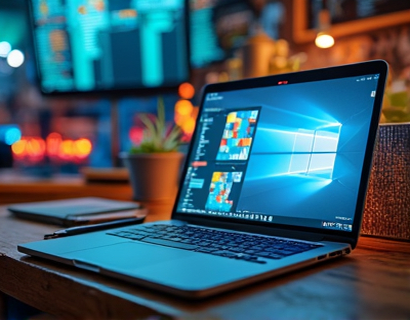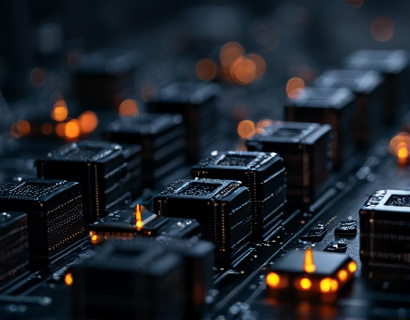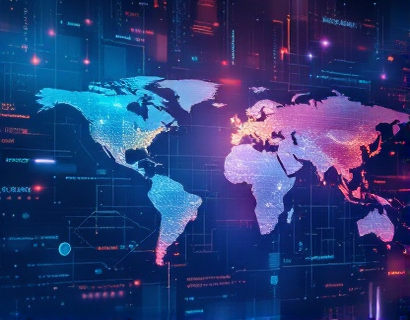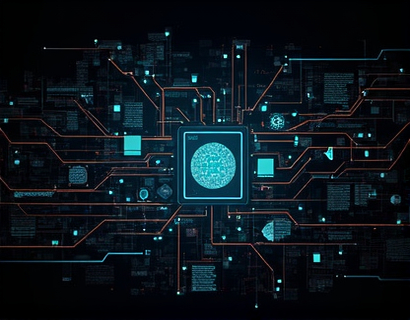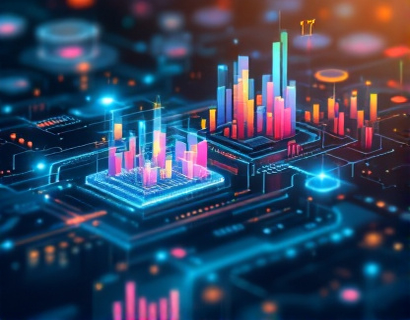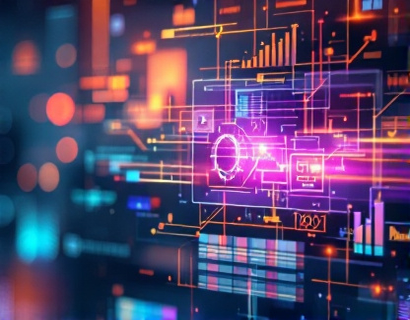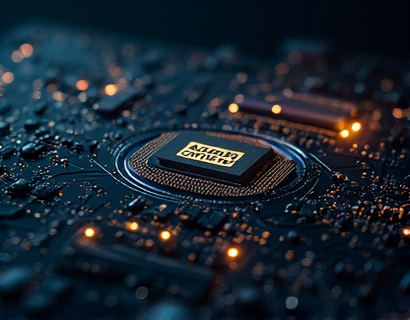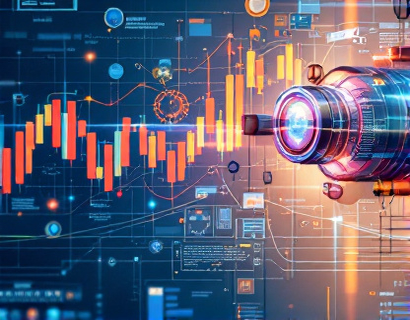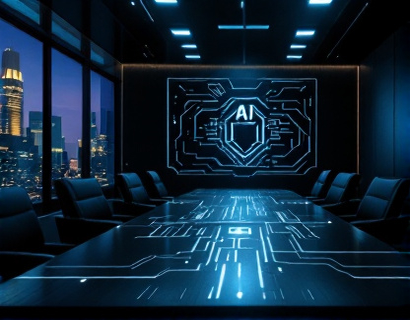Crypto and AI Synergy: Transforming Digital Experiences with Next-Gen Tech Solutions
The intersection of cryptocurrency and artificial intelligence (AI) is giving rise to a new era of digital innovation, where the synergy between these two cutting-edge technologies is redefining the landscape of digital experiences. This article delves into how the combination of blockchain and AI is creating advanced applications that not only enhance user experiences but also connect innovators with the tools they need to push the boundaries of technology. For tech-savvy individuals interested in cryptocurrency, AI enthusiasts, digital marketers, and early adopters of technology, understanding this synergy is crucial for staying ahead in the rapidly evolving digital world.
The integration of AI into the crypto space is not just about improving existing systems; it's about creating entirely new paradigms. AI's ability to process vast amounts of data, learn from patterns, and make predictions is invaluable in the realm of cryptocurrency, where market dynamics are complex and ever-changing. By leveraging AI, crypto platforms can offer more secure, efficient, and user-friendly services. This article explores the transformative power of this merger, highlighting key areas where crypto and AI are converging to revolutionize digital strategies and user experiences.
Enhanced Security Through AI-Driven Crypto Solutions
One of the most significant benefits of combining AI with cryptocurrency is the enhancement of security measures. Traditional crypto exchanges and wallets are often targets for cyberattacks due to their high value and the sensitive nature of the data they handle. AI can significantly mitigate these risks by implementing advanced threat detection systems. Machine learning algorithms can analyze patterns in transaction data to identify and flag suspicious activities in real-time, providing a proactive defense against potential breaches.
Moreover, AI can improve the security of private keys and wallet management. By using behavioral analytics, AI systems can detect anomalies in user behavior, such as unusual login times or locations, and trigger additional verification steps to prevent unauthorized access. This not only protects users' assets but also builds trust in crypto platforms, encouraging more people to adopt these technologies.
Optimized Trading and Investment Strategies with AI
The crypto market's volatility presents both opportunities and challenges for investors. AI-driven trading platforms are changing the game by providing sophisticated tools that analyze market data, predict price movements, and execute trades with precision. These platforms use natural language processing (NLP) to analyze news articles, social media posts, and other textual data to gauge market sentiment and make informed trading decisions.
Additionally, AI can help in portfolio management by optimizing asset allocation based on real-time market conditions. By continuously learning from historical data and current market trends, AI algorithms can suggest optimal trading strategies, helping investors maximize returns while minimizing risks. This level of automation and insight is particularly valuable for both individual traders and institutional investors looking to stay competitive in the crypto market.
Personalized User Experiences Through AI
The crypto and AI synergy extends beyond security and trading to create personalized user experiences. AI-driven recommendation systems can analyze user preferences, transaction history, and behavior to suggest relevant crypto assets, services, and content. This personalization enhances user engagement and satisfaction, making crypto platforms more intuitive and user-friendly.
For instance, a crypto exchange could use AI to recommend specific coins or tokens based on a user's past investments and market trends. Similarly, educational content can be tailored to the user's level of knowledge and interests, ensuring that they receive the most relevant information to help them make informed decisions. This level of personalization not only improves the user experience but also fosters a more loyal and active community around crypto platforms.
Decentralized Applications (DApps) and AI Integration
Decentralized applications (DApps) are at the forefront of the crypto revolution, offering decentralized alternatives to traditional web applications. The integration of AI into DApps is opening up new possibilities for innovative and intelligent applications. AI can enhance the functionality of DApps by providing smart contract optimization, predictive analytics, and enhanced user interfaces.
For example, AI can optimize smart contracts to ensure they execute efficiently and securely, reducing the risk of errors and vulnerabilities. Predictive analytics can help DApps anticipate user needs and preferences, enabling proactive service delivery. Additionally, AI-powered user interfaces can offer a more seamless and intuitive experience, making DApps accessible to a broader audience.
Supply Chain Transparency and Efficiency with Blockchain and AI
Beyond the crypto space, the combination of blockchain and AI is transforming supply chain management. By leveraging blockchain for transparent and immutable record-keeping, and AI for data analysis and optimization, businesses can achieve unprecedented levels of efficiency and trust. AI can process and analyze vast amounts of supply chain data to identify bottlenecks, predict demand, and optimize logistics.
For instance, AI algorithms can forecast inventory levels based on historical sales data, market trends, and external factors such as weather conditions. This predictive capability helps businesses reduce waste and ensure that products are available when and where they are needed. Blockchain ensures that all transactions and movements within the supply chain are recorded transparently, reducing the risk of fraud and errors. This synergy not only streamlines operations but also builds trust among all stakeholders involved.
Challenges and Considerations
While the potential of crypto and AI synergy is immense, there are several challenges and considerations that need to be addressed. One of the primary concerns is regulatory compliance. The crypto space is still navigating a complex web of regulations across different jurisdictions, and the integration of AI adds another layer of complexity. Ensuring that AI-driven crypto solutions comply with local and international regulations is crucial to avoid legal issues and maintain user trust.
Another challenge is the technical expertise required to develop and maintain these advanced systems. Both crypto and AI are highly specialized fields, and finding professionals with expertise in both areas can be difficult. Organizations need to invest in training and hiring talent who can bridge the gap between these technologies to fully realize their potential.
Furthermore, there are ethical considerations to keep in mind. AI's ability to analyze and predict user behavior raises questions about privacy and data security. It is essential to implement robust privacy measures and be transparent about data usage to build and maintain user trust. Ethical AI practices should be a priority to ensure that the benefits of this technology are realized without compromising individual rights.
Future Prospects and Innovations
The future of crypto and AI synergy is bright, with numerous innovations on the horizon. One area of excitement is the development of AI-powered decentralized finance (DeFi) platforms. These platforms aim to provide financial services such as lending, borrowing, and yield farming in a decentralized manner, leveraging AI to enhance security, efficiency, and user experience.
Another promising area is the integration of AI with non-fungible tokens (NFTs) and digital art. AI-generated art and unique digital assets can be securely tokenized on the blockchain, creating new opportunities for artists and collectors. AI can also assist in the creation and authentication of digital art, ensuring its scarcity and value.
Additionally, the rise of Web3 and the metaverse presents a fertile ground for crypto and AI collaboration. AI can enhance the immersive and interactive experiences in virtual environments, from personalized avatars to dynamic content generation. The synergy between these technologies will play a crucial role in shaping the future of digital interactions and experiences.
In conclusion, the convergence of cryptocurrency and AI is driving a new wave of innovation in the digital landscape. By enhancing security, optimizing trading, personalizing user experiences, and transforming supply chain management, this synergy is redefining the future of digital solutions. For tech enthusiasts and businesses alike, embracing this synergy is essential for staying competitive and leveraging the full potential of next-generation technology.





